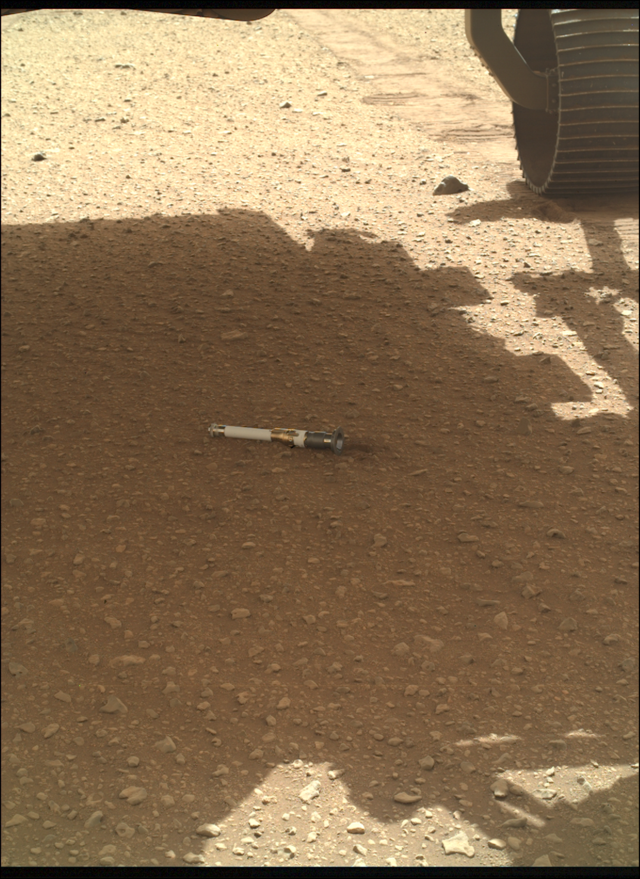NASA announces new office for receiving alien rock samples
In Universal Pictures' 1971 movie The Andromeda Strain, based on the Michael Crichton novel of the same name, a satellite crashes just outside the town of Piedmont, New Mexico. By the time anyone outside realizes anything is wrong, everyone in the town (save a few mysterious survivors) has died a bizarre and brutal death at the hands of an alien microorganism. A small team of scientists at a secret government facility are all that stand between humanity and utter extinction.
As humanity returns to the Moon and sets its sites on more distant shores, there is some concern about biological cross contamination. We’re mostly concerned that we might contaminate any fledgling biospheres on other worlds by sending our landers, rovers, and assorted probes. There is also the worry, of course, that something from another world will creep into our ecosystem and destroy us from within.
RELATED: Astronomers find the face of a cracked-out bear on the surface of Mars
For the most part, it’s not a huge concern, at least so far. The only visitors we’ve had from Mars (that we know of) are the blown away bits of the red planet which have crash landed here as meteorites, and those were sterilized in the cleansing furnace of the atmosphere. For now, we haven’t intentionally sent any organisms, human or otherwise, to the red planet, and we take great pains to minimize any contamination on the spacecraft we send. What’s more, those trips have historically been one way. We send our machines to our planetary neighbor with the knowledge that neither they, nor any part of them, will ever return home. But that is about to change.
Ever since the Perseverance rover landed on Mars in February 2021, it has been exploring and investigating the area in and around Jezero Crater. Every now and again it drills into a particularly interesting looking rock and takes a sample of the planet itself. Those samples are then stored in cylindrical containers which so closely resemble lightsaber hilts that it almost must have been intentional.

Martian sample Photo: NASA/JPL-Caltech/MSSS
Some of the samples will be stored at a backup landing site, in the event that the first plan doesn’t work. There's also a plan B to ensure we get samples back to Earth, even if Perseverance is disabled. If everything goes according to plan, the backup samples will sit right where they are forever. Here’s what’s supposed to happen: In 2030, a craft will land on Mars and rendezvous with Perseverance. If the rover is still in good health, it will deliver samples to the return craft, which will then blast off from Mars and return to Earth with the samples in tow. It will be the first time we have reached out to touch Mars and grabbed a piece of it for our own.
In preparation, NASA recently announced the launch of the Mars Sample Receiving Project office, which will be responsible for receiving and handling the samples returned from Mars to Earth. Their primary goal is to quickly and safely get the samples into the hands of scientists. The office will be a part of the existing Astromaterials Research and Exploration Science office at Johnson Space Center, an organization already experienced in handling extraterrestrial samples.
RELATED: Our Mars rocks are ready, now we just need to go get them
“NASA Johnson houses the largest and most diverse collection of astromaterials in the world, beginning with samples returned from the Apollo Program. With our expertise, we look forward to managing the project that will receive scientifically compelling Mars samples gathered by the NASA Perseverance rover,” said Johnson Center Director Vanessa Wyche, in a statement.
The samples are expected to arrive back on Earth in 2033, at which time the office will recover and contain the samples while they assess safety. They’ll also catalog and curate the collection, as well as coordinate with scientists to investigate these laboriously collected pieces of an alien world. Scientific investigation of the samples will improve our understanding of Mars’ chemical and geological composition and will help inform future missions, both crewed and uncrewed, but that’s not all. Perseverance’s landing site at Jezero was specifically chosen because it is one of the most promising locations for signs of life. If life exists, or ever did exist, on Mars then those samples might contain the first verifiable evidence.
Whether the Martian rock samples harbor alien life or not, we’re glad to know there’s a buffer between them and the rest of the world.
If you want to see what happens when things go wrong at alien customs, don’t miss The Andromeda Strain, from Universal Pictures.
